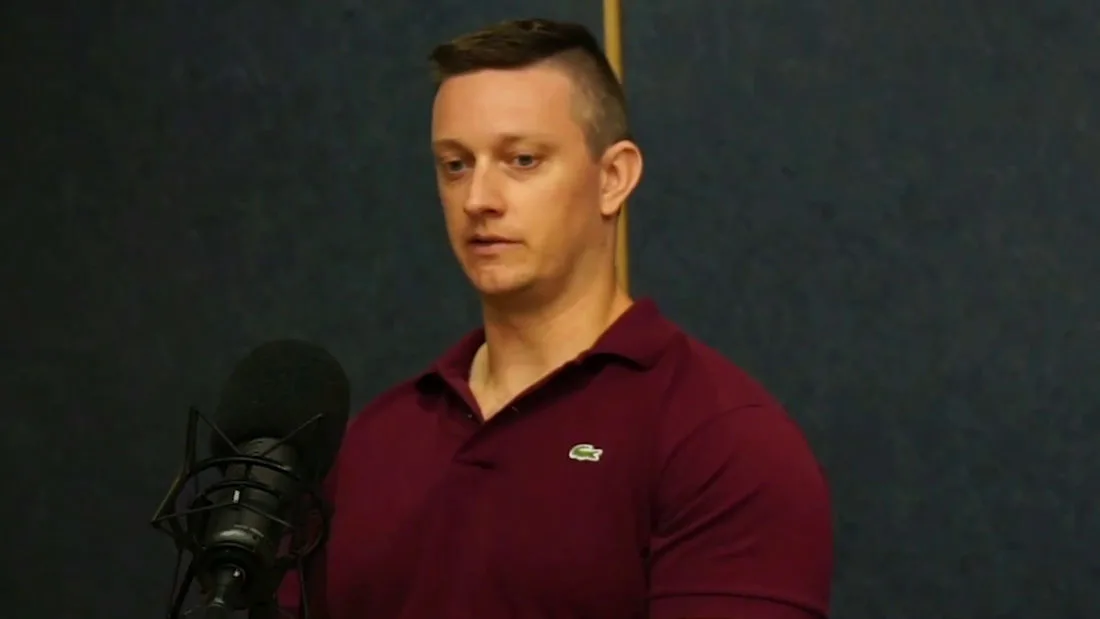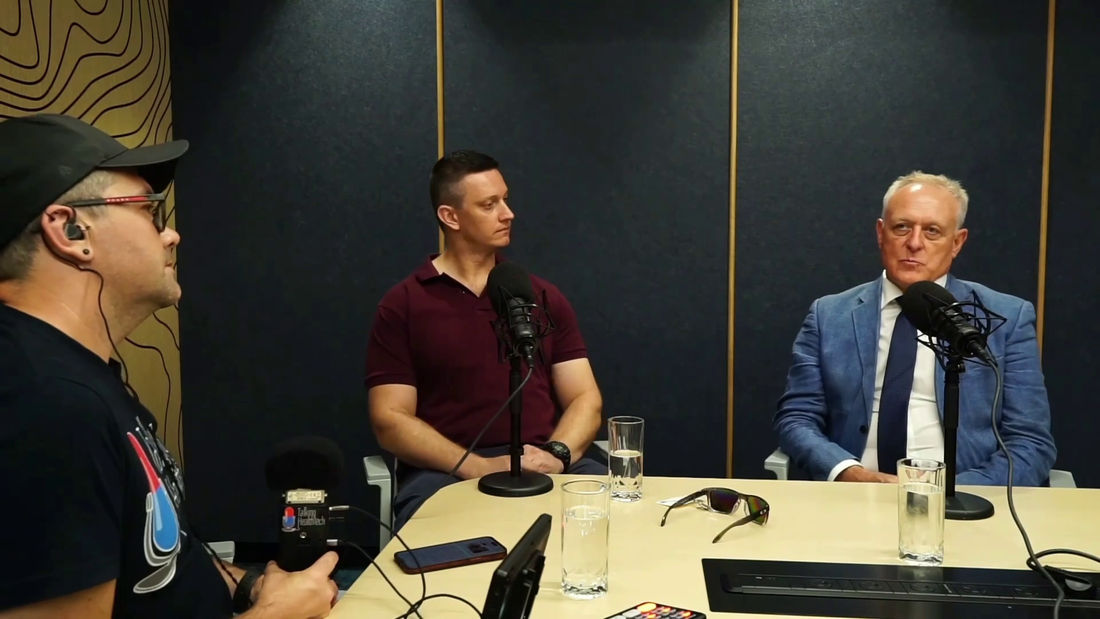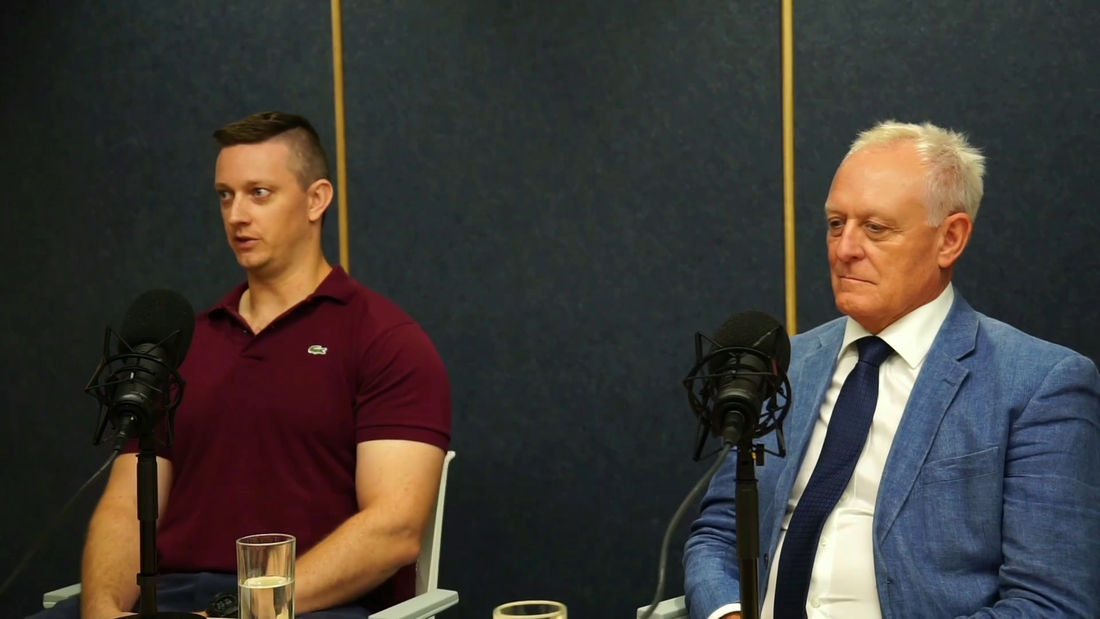Talking HealthTech: 344 – The power of clinical speech recognition. Dr Pieter Nel & Dr Andrew Brier – Mackay Hospital & Health Service (HHS)

Source: talkinghealthtech.com

Provided by:
Talking HealthTech
Published on:
18 April 2023
For this episode, Pete was at Microsoft’s office in Sydney at a breakfast event featuring networking and food, and also some great learnings and presentations shared by Dr Pieter Nel and Dr Andrew Brier from Mackay Base Hospital, who’ve implemented voice-to-text technology in their emergency department thanks to Nuance and Dragon Medical One (DMO).
At the event, Pete sat down with Andrew and Pieter to discuss how speech recognition technology is giving time back to clinicians. They also explored how the Mackay HHS has improved communication between healthcare professionals using voice-to-text tools and plenty more.
Who is Dr Andrew Brier?
Andrew is a specialist emergency physician based in Mackay, where he’s spent pretty much seventy-five per cent of his entire medical career. He and his family have also settled in this area with no plans of moving anytime soon. Andrew loves his very interesting and rewarding job, as he gets to see a variety of cases based on their location and limited access to tertiary-level care.
Who is Dr Pieter Nel?
Pieter originally trained and worked in South Africa but has been in Mackay for the past thirteen years. He was the clinical director of the emergency department, taking part in the journey of getting Mackay on the map. Pieter was also involved with the rollout to have the Cerner product in Queensland, Mackay and then statewide rollout.
His background is a rural generalist, and he also dabbles in medical administration. Currently, he serves as the Chief Digital Director of medical services at Mackay Base Hospital but still performs clinical duties.

The Journey of Implementing Voice-to-Text Technology
Mackay is unique, but it also has about six generations of clinicians. So, how do you plan for a generation that is close to retirement versus the new generation coming in? As such, learnings were taken from the EMR implementation process and applied to the benefits of speech recognition for all clinicians.
The approach involved focusing in part on the seniors since they were the ones who served as role models and influencers. When the younger generations see their seniors use a certain solution, they are more likely to adopt it too. In addition, a competitive model was used to bring the DMO concept to the table and assist with Pieter’s vision. It benefited everyone by reducing the time spent typing, even those who are very fast typers.
As this solution rolled out, Pieter and his team realised that there are many other benefits to be gained from this speech recognition solution.
Why is it Important to Help Clinicians Save Time?
Empowering clinicians by helping them to save time with the use of technology is quite essential. Compared to a speed typing test, the DMO testing that the clinicians underwent saw some wonderful results in terms of timing and output quality, and clinicians were able to create a good narrative because there were no spelling errors. Also, the reduction of time for clinicians was immediately evident.
How do Patients and other Stakeholders Benefit?
With more time being available to clinicians, they are now able to spend more time at the bedsides with interns and other PHOs. The nursing staff has also benefited from the voice-to-text solution implementation, as they can now receive more support from the doctors. For the patients, their journey and safety are improved through the delivery of higher quality notes, and this is especially important for handover between clinicians.
Adopting the Use of Speech-to-Text Clinically
One might think that speech recognition software would not be a practical solution for such a busy and noisy environment as an emergency department and, as such, would expect its adoption to be slow. However, Andrew, for example, unlocked new possibilities while using it. Now, he is completely dependent on it because it has made him much more efficient.
Making Use of Unusable Time
There are two elements to unusable time, with the first being extraordinarily time-compressed moments. These are very short periods between tasks, maybe sixty seconds or less. These fleeting moments are typically not used. But with the help of the speech recognition software, clinicians can order diagnostic tests, create treatment plans and more, allowing them to be extremely efficient. The use of this time also reduces the length of wait for patients and leaves helpful communication for other healthcare staff members.
The other unusable moment occurs when clinicians are on the move from one part of the department to the other. Typically, no work gets done during that time. However, by using the speech recognition software, they can continue to dictate notes, write discharge or GP letters etc., as they are moving by using their microphones plugged into their mobile workstations.
Making use of these short time windows also means less documentation to be done at the end of the shift.
The Accuracy of Dragon Medical One
One word can be used to describe Dragon Medical One’s accuracy for relaying medical content- BRILLIANT.
Free speech recognition tools are not very accurate when used by people with even the slightest accent. In contrast, Dragon Medical One is able to process various accents. Plus, you can train your dragon specifically in additional medical terminology so that it can spell and remember your own words and abbreviations correctly. Additionally, it works well in noisy environments, or while wearing a mask and can be used Apple noise-cancelling earbuds.
Dragon Medical One facilitates the massive advantage of dictating anywhere, any time, in real-time.

Is Over-documentation an Issue?
While this speech recognition solution allows for more documentation, to avoid over-documentation, clinicians are using a set structure that they learnt in medical school. It enables them to tell a story without including unnecessary bits of information. This solution facilitates more accuracy and details, which is especially helpful for legal cases, revenue recapturing, the release of information to patients, police statements etc., without the clinician having to struggle trying to remember the details of what happened months ago.
These more comprehensive notes are also quite beneficial to junior doctors who may be working in an urgent situation. They might just put down significant positives and omit some significant negatives. A lot of the time, significant negatives are lost, especially when they are under time pressure, but both the positives and negatives are needed to make an accurate decision about the patient’s situation.
In many cases, the hospital’s administration will also see time-saving benefits as well. Because with sufficient documentation already available, there will be no need to wait minutes or hours for the medical staff to remember what happened and draft a statement for whatever purpose it is needed. Also, they don’t need to struggle to understand the doctors’ handwriting.
How Important is Timestamping, and how does Dragon Medical One Help?
This is almost a flow-on from doing documentation in real-time. It is basically noting exactly when something happened. For example, if a very hectic resuscitation trauma case was to go to a coroner’s case and they are assessing exactly the management that the patient received, rather than just a vague sense of this happened during the thirty minutes that the patient was there, they can see exactly what time it happened and in what order.
In one instance where a senior nurse had to act as a scribe, they had set up one button on the microphone as a timestamp, and they would hit that to the second and would say, for example, “adrenaline given.” In that specific situation, though it was very hectic and there was no pre-planning whatsoever, they were still able to generate some of the most comprehensive resuscitation notes in terms of the actual progression of events.
It also provides advantages to medical emergency calls or obstetric med calls when you have a busy environment, and it’s very important then to document the timestamp exactly as the event happened. Consequently, it has a huge impact on the nursing staff as well. This Dragon Medical One solution also has a significant benefit on the well-being of clinicians because they no longer need to worry about the accuracy of the documentation that they had to do at the end of their shift. They can go home and get a good rest, knowing that the next healthcare team member will be receiving comprehensive and accurate notes from them, which may also help to reduce clinician burnout.
Furthermore, communication documentation surrounding the loved ones of the patient can be done in a more narrative way, which also holds the benefit of making the relaying of that information more humanistic than just putting down points. Therefore, if the family were to ask for a release of the notes, because it is written in a narrative and with better compassion, it will reduce anger for the patient’s family and help them get closure.

Advice for Those Looking to Implement Speech Recognition Technology
In addition to targeting the senior clinicians, one of the missing parts of the success of a pilot is that it needs to be driven by the clinicians in general. So, focus more on who your influencers and mentors are and who can change the journey. While the administrators are good for the oversight of a project, you need the clinicians to drive it.
Mackay Base Hospital took it a bit further than the medical and nursing staff, to include allied health, and even psychologists who were quite engaged and driven in the mental health area. Interestingly, psychologists take up to about three hours to do a comprehensive report, but now they do it within forty-five minutes.
For anyone listening who is sceptical about using speech recognition technology in healthcare, just give it a go. You might be very surprised about how quickly it improves your clinical practice.
We just touched the tip of the iceberg in terms of what voice recognition can do for patient safety, patient care, the patient journey and the well-being of clinical staff.
If you have questions, feel free to reach out to the digital staff at Mackay Base Hospital, and you can also contact Andrew directly via LinkedIn and Pieter via LinkedIn too.